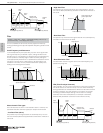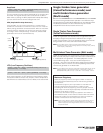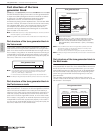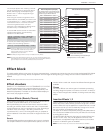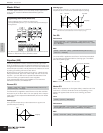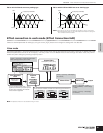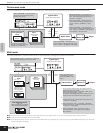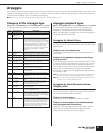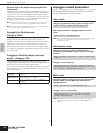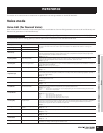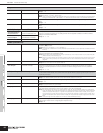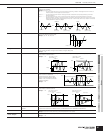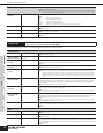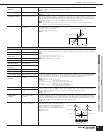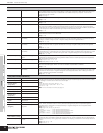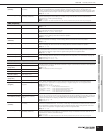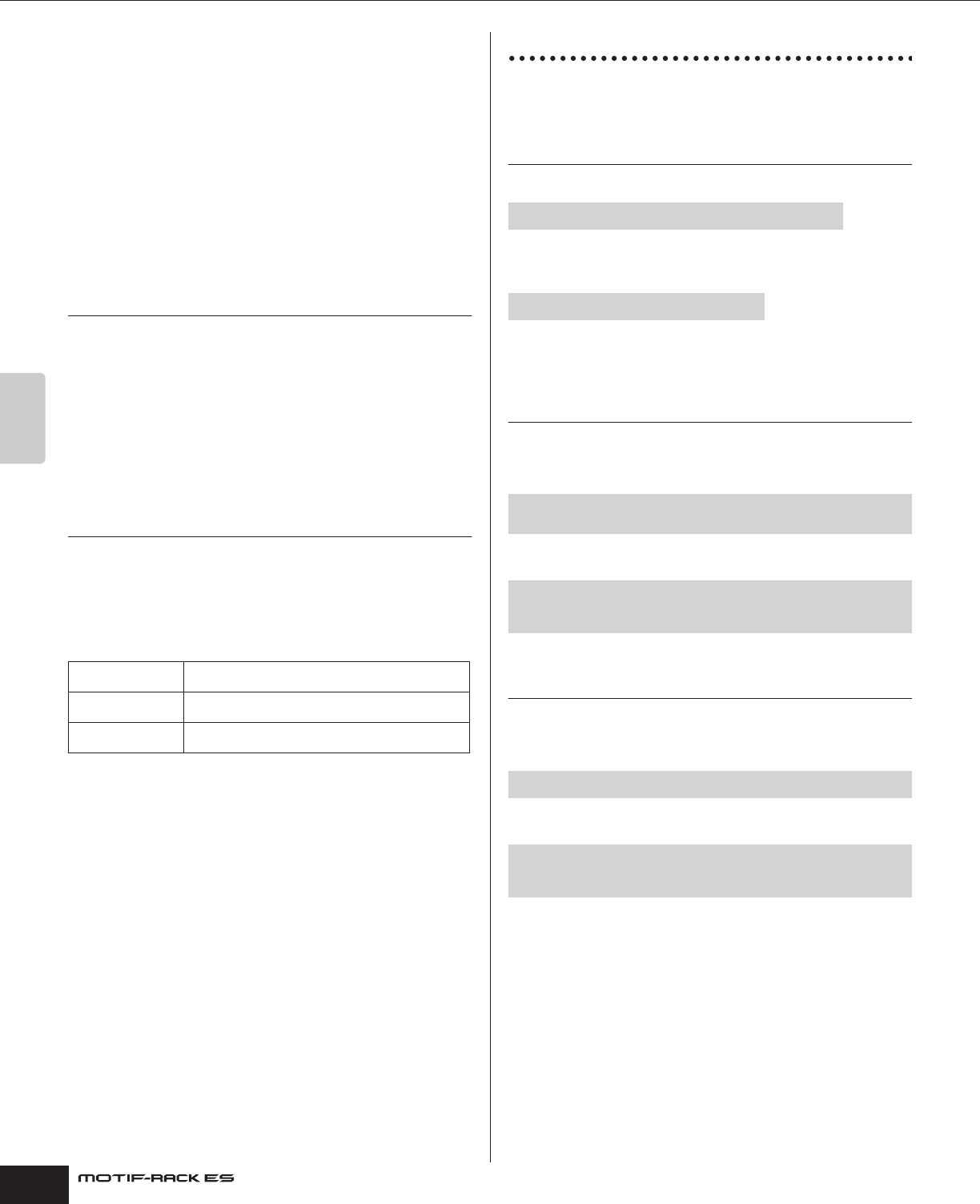
Owner’s Manual
Arpeggio Arpeggio related parameters
64
Basic Structure
Playback only of the played notes (assigned drum
instruments)
Playing a note or notes will trigger a rhythm pattern using only the
notes played (assigned drum instruments). Keep in mind that even
if you play the same notes, the triggered rhythm pattern differs
depending on the order of the notes played. This gives you access
to different rhythm patterns using the same instruments simply by
changing the order in which you play the notes.
n The three playback types above are not distinguished by the category name or
type name. You’ll have to actually play the types and hear the difference.
n Since these types are programmed for Drum Voices, using them with Normal
Voices may not give musically appropriate results.
Arpeggios for Performances –
Category: Comb
The Arpeggio types belonging to the category “Comb” are
programmed so that different arpeggios are triggered – an
arpeggio for a Normal Voice and an arpeggio for a Drum Voice –
depending on the played note. These types are useful in the
Performance mode in which multiple Voices (Drum Voice and
Normal Voice) are combined in a layer since these types enable
you trigger the arpeggio for the Normal Voice and the Drum Voice
at the same time.
Arpeggios containing mainly non-note
events – Category: Cntr
These arpeggio types are programmed primarily with Control
Change and Pitch Bend data. They are used to change the tone or
pitch of the sound, rather than play specific notes.
In fact, some types contain no note data at all. When using a type
of this category, set the “KeyMode” parameter to “direct” with the
following operations.
Arpeggio related parameters
The Arpeggio related parameters can be set from the following
displays, depending on the selected mode.
Voice mode
Arpeggio type parameters called up when selecting a Voice
MIDI output parameters for Arpeggio playback for all the
Voices
n MIDI output parameters for Arpeggio playback are set for all the Voices in the
Voice mode. In the other modes, however, they can be set for each
Performance and Multi.
Performance mode
Arpeggio type parameters called up when selecting a
Performance (including MIDI output parameters for Arpeggio
playback)
Arpeggio on/off (for each Part)
Multi mode
Parameters related to Arpeggio type that are called up when
selecting a Multi (including MIDI output parameters for
Arpeggio playback)
Arpeggio on/off (for only one Part)
n During playback, you can select the desired Arpeggio from Arpeggios 1-5
(stored in each Voice/Performance/Multi) with the PAGE [E][F] buttons
(page 43).
Voice mode
[VOICE] → select Voice → [SHIFT] + [ARP EDIT] →
“KeyMode”
Performance mode
[SHIFT] + [PERFORM] → select Performance →
[SHIFT] + [ARP EDIT] → “KeyMode”
Multi mode
[MULTI] → select Multi → [SHIFT] + [ARP EDIT] →
“KeyMode”
[VOICE] → select Voice → [SHIFT] + [ARP EDIT] (pages 43, 88)
[VOICE] → [UTILITY] → Voice display (page 90)
[SHIFT]+[PERFORM] → select Performance → [SHIFT] + [ARP EDIT] (pages
43, 88)
[SHIFT]+[PERFORM] → select Performance → select Performance Edit by
pressing [EDIT] once or twice → [MUTE/SEL/ENTER] (LED turns off) → select
Part → Voice display → ArpSwitch (ArpSw) (pages 44, 80)
[MULTI] → select Multi → [SHIFT] + [ARP EDIT] (pages 43, 88)
[MULTI] (LED lights in green) → select Multi → [SHIFT] + [ARP EDIT] →
[MUTE/SEL/ENTER] (LED turns off) → select Part → Voice display →
ArpSwitch (ArpSw) (pages 44, 80)



